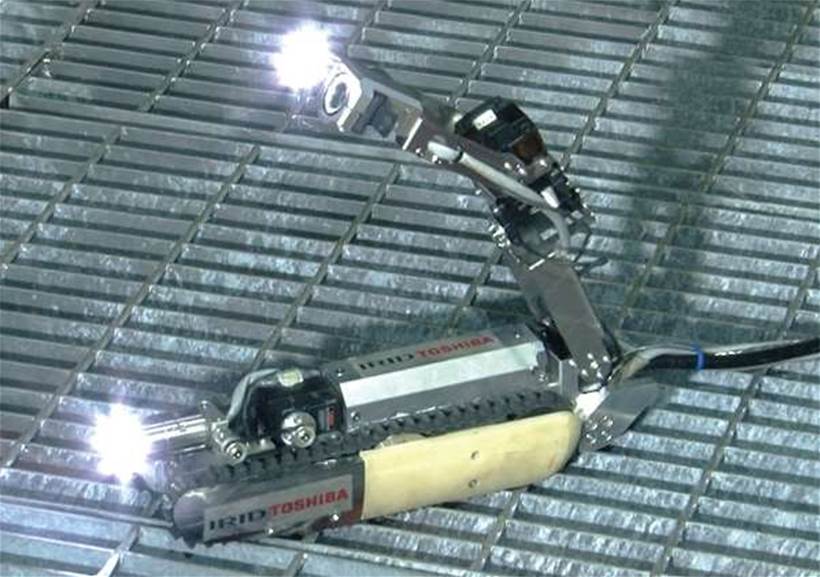Toshiba is readying the latest robot to be sent in to investigate damage to the primary containment vessel at Unit 2 of the Fukushima Daiichi nuclear power plant in Japan.
The Tokyo-headquartered technology firm has collaborated with the International Research Institute for Nuclear Decommissioning (IRID) to create a scorpion-like robot that it hopes to introduce to the site in August.
It is presently in a phase of operator training, according to Toshiba’s Japanese website.
The robot is approximately 54cm long and 9cm high and wide, and moves on caterpillar tread. It has two cameras, LED lights, a radiation dosimeter and a thermometer.
It can be remotely operated but is attached to the outside world via a wired cable. Simulated videos show the robot will enter and exit the crippled unit via a 10cm-wide pipe.
The robot’s primary purpose is to confirm the distribution of fuel debris inside the reactor. This information is needed to determine procedures and methodologies for removing the debris.
Before it can get to the base of the primary containment vessel and beam pictures back to technicians, the robot must first work out if there are any obstacles along the possible routes to the base of the vessel.
It has been designed to manoeuvre around such obstacles: it can fold flat to keep a low profile as it passes under fallen beams, for example, and it is segmented to allow it to flip – which could be useful if it stumbles while trying to gain access.
Once in a wider, more open space, the operator can raise the robot’s tail to illuminate and film the interior of the containment vessel. This gives the robot its distinctive scorpion-like appearance.
The robot is designed to return on the same path it came in on. No information is provided by Toshiba or IRID on how they might handle the robot should it complete its mission.
Whether it does make it out of the reactor isn’t guaranteed.
A snake-like robot developed by Hitachi and affiliate Hitachi-GE Nuclear Energy was abandoned inside the No.1 reactor in April after operators lost control.
It managed to complete most of its mission – exploring 14 of 18 spots earmarked for inspection – before it had to be abandoned. If it had made it out, it would have been stored in a shielded box, with no plans for reuse, according to the Japan Times.
The Japan Times noted that different robots had to be designed for each reactor at Fukushima to cope with differences in reactor designs.
Before Hitachi’s snake, the IB Times reported 15 robots have so far been used to collect data that will help plant operator TEPCO decommission the facility.
They include iRobot PackBots that were sent into three reactor buildings in April 2011, and a domestic disaster robot called Quince that was able to reach further into the buildings than the PackBots.










